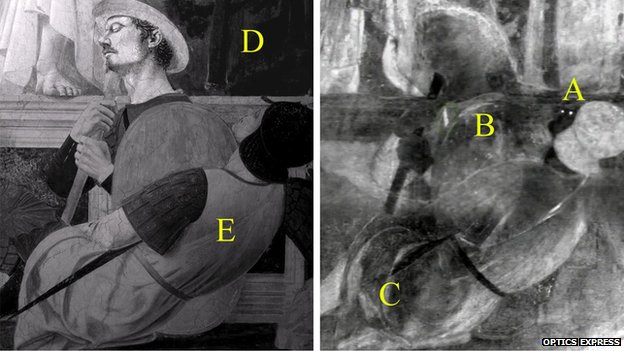A new technique has been developed that mitigates the traditional problem with using infrared on artwork–heat. This light-based method, known as Thermal Quasi-Reflectography (TQR), generates much less heat while providing more detail than previous approaches.
Established techniques called near-infrared spectroscopy and thermography use chunks of this part of the spectrum, but TQR reveals details that these other techniques miss.
It makes use of a comparatively low-power halogen light, and a camera which can see some of the “mid-infrared” wavelengths of light – from three to five millionths of a metre“Our system easily identified old restorations in which missed gold decorations were simply repainted,” said Claudia Daffara of the University of Verona, lead author of the study.
However, Dario Ambrosini of the University of L’Aquila said that further studies are needed to turn TQR into a method that can actually identify pigments, rather than just showing that different pigments or techniques were employed.“Determining the chemical makeup of the pigments is important in determining how best to protect and restore the artwork,” he said. He added that the approach could also find use in other analytical applications beyond those in art restoration.“In principle, it should work whenever we desire to differentiate surface materials.”
BBC News reports on the TQR infrared approach, with several examples.
(PHOTO: Optics Express)


